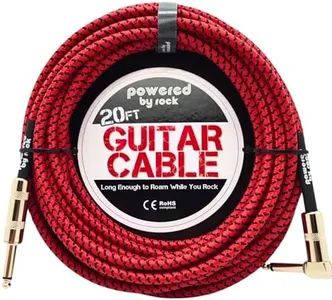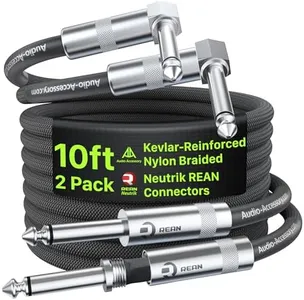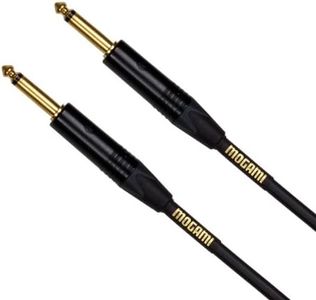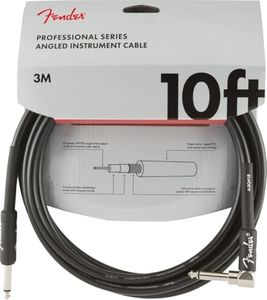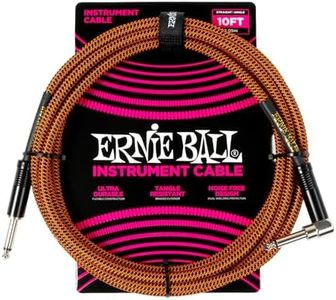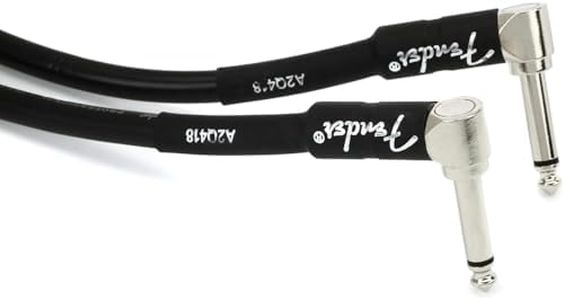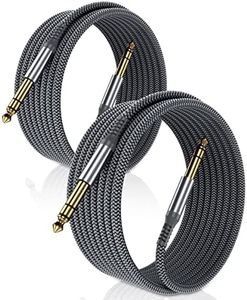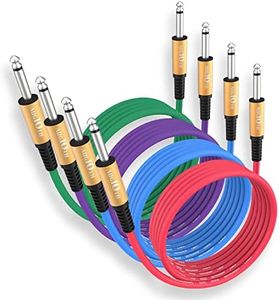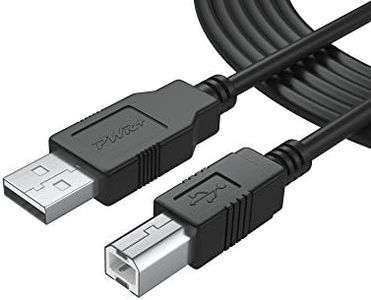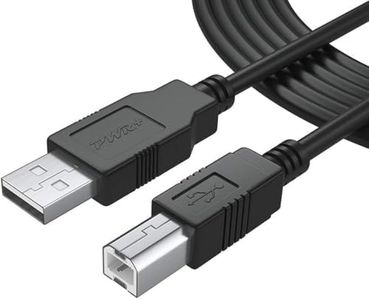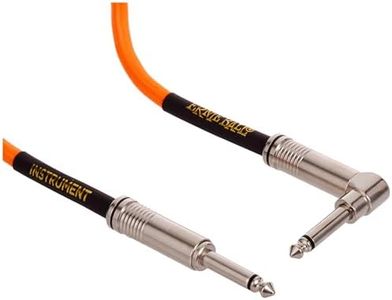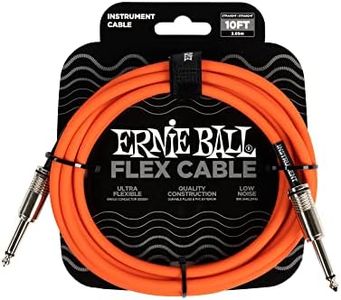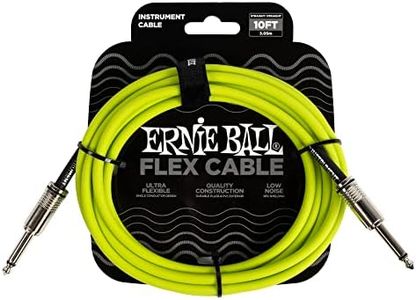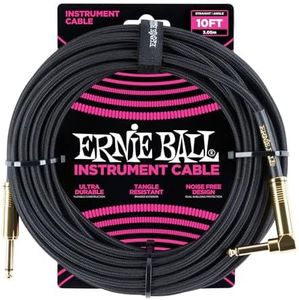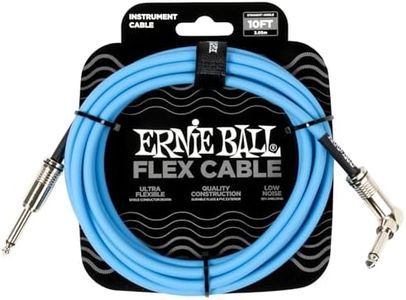10 Best Guitar Cables 2025 in the United States
Our technology thoroughly searches through the online shopping world, reviewing hundreds of sites. We then process and analyze this information, updating in real-time to bring you the latest top-rated products. This way, you always get the best and most current options available.

Our Top Picks
Winner
AA AUDIO ACCESSORY Right Angle Guitar Cable 10 ft 2 Pack, Nylon Braided Anti-Kinking Kevlar-Reinforced, 20 AWG 99.99% OFC 1/4 Instrument Cable, AL & OFC Shielded Guitar Cord for Fender Electric Guitar
Most important from
732 reviews
The AA AUDIO ACCESSORY Guitar Cable set includes two 10-foot cables designed with durability and sound quality in mind. They use professional-grade 20 AWG wire, which helps keep your guitar’s tone clear by reducing signal loss, a step above the thinner wires found in cheaper cables. The connectors are high-quality Neutrik Rean types, known for reliable and secure connections, with a right-angle plug on one end to fit tight spaces on pedals or amps.
The cables are Kevlar-reinforced and feature a braided outer layer, making them very tough and resistant to bending or damage—ideal if you move around a lot or travel with your gear. Inside, multiple layers of shielding (aluminum foil plus braided copper) protect against unwanted noise from nearby electronics, so your sound stays clean whether on stage or in the studio. The solder joints are shielded with heat shrink tubing and use silver solder for better signal stability and longer life.
These cables come with a lifetime warranty, offering peace of mind. The fixed 10-foot length may be less flexible for players needing shorter or longer cables, and right-angle connectors might not suit every setup preference. For musicians seeking durable, noise-resistant cables that maintain good sound quality at a reasonable price, this set is a strong choice.
Most important from
732 reviews
Mogami Gold Instrument 25 Guitar Instrument Cable, 1/4" TS Male Plugs, Gold Contacts, Straight Connectors, 25 Foot, Guitar Cable with OFC Core, Anti-Noise Shielding, Pro Audio Quality
Most important from
962 reviews
The Mogami Gold Instrument 25 is a 25-foot guitar cable built to deliver pro audio quality, ideal for musicians who want to preserve their guitar's true tone. It uses high-definition Mogami 2524 cable material and features gold-plated 1/4" TS connectors that resist corrosion and provide consistent signal transfer. Thanks to its advanced shielding, including carbon-impregnated PVC and a dense spiral shield, this cable effectively blocks noise from movement and electrical interference, making it a solid choice for both stage performances and studio sessions.
The cable’s low capacitance helps maintain clarity and reduces tone coloration, which means it keeps your sound pure and detailed. Durability is another strong point; it’s designed to last with a lifetime warranty backing it up. The 25-foot length is fixed, so if you need a shorter or longer cable, you’ll have to look for another option. While the cable is high quality, its premium features come at a higher price compared to basic cables.
For serious guitarists focused on sound quality and reliability, especially in noisy environments, this cable is a worthwhile investment. Casual players or those on a tight budget might find simpler cables sufficient.
Most important from
962 reviews
Fender Professional Series Instrument Cable, Guitar Cable, Guitar Accessories, Straight/Angle, Black, 10ft
Most important from
14237 reviews
The Fender Professional Series Instrument Cable is a 10-foot guitar cable designed for musicians seeking reliable performance. This cable offers both straight and angle 1/4-inch connectors, making it versatile for various setups. One of its notable strengths is the engineered design that prevents twisting and kinking, ensuring a hassle-free experience during use.
The 95% oxygen-free spiral shielding is flexible and significantly reduces handling noise, which is crucial for maintaining a clean sound during performances or recordings. The 8mm PVC jacket contributes to low noise interference, and the 22-gauge conductor ensures a strong signal path, which is beneficial for clear and uninterrupted sound transmission. The nickel-plated connectors add to its durability and reliability, while the lifetime guarantee from Fender provides peace of mind regarding its longevity.
Some users might find the cable a bit bulky due to the 8mm jacket, which could be a drawback for those looking for a more lightweight option. The cable's construction prioritizes durability and sound quality, making it suitable for both indoor and outdoor musical instrument signal transmission. This cable is particularly well-suited for musicians who value durability and sound clarity in their setups.
Most important from
14237 reviews
Buying Guide for the Best Guitar Cables
Choosing the right guitar cable is crucial for ensuring the best sound quality and performance from your instrument. A good cable can make a significant difference in your overall playing experience, reducing noise and maintaining the integrity of your guitar's tone. When selecting a guitar cable, it's important to consider several key specifications to find the best fit for your needs.FAQ
Most Popular Categories Right Now
